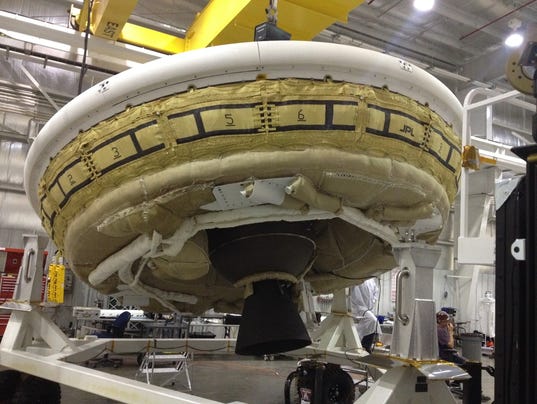
After several weather delays, NASA successfully launched and recovered a "flying saucer" into Earth's atmosphere Saturday to test technology that could be used to land on Mars.
The experiment off the coast of the Hawaiian island of Kauai tested the disc-shaped vehicle and a giant parachute. The parachute did not fully deploy but NASA still deemed the mission a success.
Saturday afternoon, the 'flying saucer' splashed down in Pacific.
.
The test at the Kauai military range had been postponed several times since June 2 because of winds.
It may seem straight out of a B-movie, but the space agency says the launch had a serious purpose: to test technology that will help land spacecraft and someday humans on Mars.
NASA still relies on some of the basic designs developed more than 40 years ago to land the Viking spacecraft on Mars, principal investigator Ian Clark of NASA's Jet Propulsion Laboratory said earlier this month.
"We've been using the same parachutes for several decades now," he said. "If we want to eventually land a human on the surface of Mars, we realized we need to develop new technologies."
The low-density supersonic decelerator, as it's officially known, ascended into the skies dangling from a gargantuan balloon filled with helium. At 34 million cubic feet, the balloon filled the Rose Bowl, encasing the helium in a skin made of a high-tech film as thin as sandwich wrap.
After the balloon and its load soar to roughly 23 miles high, the balloon broke away from the vehicle and drop to Earth, the cue for a rocket attached to the saucer to fire. The rocket propelled the saucer to four times the speed of sound, duplicating the rapid clip of a spacecraft bound for Mars.
The saucer's inflatable ring, made of the same material as bulletproof vests, popped up, expanding to some 3 feet high in a fraction of a second. The ring is designed to brake the vehicle as it speeds through the atmosphere.
NASA's latest rover on Mars, the Mars Science Laboratory, weighed about a ton. The new technology being tested would allow the landing of a load twice as heavy, and the use of multiple parachutes could mean even spacecraft of 20 to 30 tons could make a soft landing, Clark said.
At the test location high above the Earth, the air is as thin as the wispy atmosphere around Mars.
"We want to test them here — where it's a lot cheaper — before we we send them to Mars," said project manager Mark Adler, also of the Jet Propulsion Laboratory.
Contributing: Associated Press
Source
No comments:
Post a Comment
Note: Only a member of this blog may post a comment.